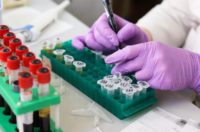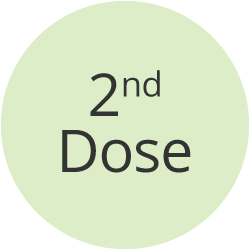
Advisory Committee on Immunization Practices.
A panel of scientific advisers at the CDC met yesterday and issued its recommendations on who should receive the first COVID-19 vaccinations. The guidelines are not binding on states, but hopefully the recommendations will have some influence on those policies. The Centers for Disease Control and Prevention’s Advisory Committee on Immunization Practices supported the recommendations in a 13-1 vote.
We will not know who in Inyo and Mono Counties will receive the vaccines first, but it’s a safe bet that California and its fifty-eight counties will closely follow the CDC guidelines. Typical of the response to the national crisis so far, there is no national policy or attempt at coordination between the states in handling the spread of the coronavirus across the U.S. The problem? Politics, of course.

Medical breakthroughs come through science.
The only counterbalance to the destructive politics has been the public healthcare authorities who have consistently made science-based recommendations to the politicians that have been ignored by many. And yes, as they learn more about the virus, those recommendations have and will change. It is why it is called “Science.”
Because of the politics, the coronavirus pandemic is out of control and raging across the entire country. The blame is not fully on politicians; many Americans have ignored the advice of health authorities and continued to travel widely, meet in large groups and family gatherings, and not follow basic safety precautions on social distancing, handwashing, and wearing face coverings either from indifference, COVID-19 fatigue, deliberate ignorance often based often on their political beliefs, or personal self-interest. One of the biggest concerns now is that many diagnosed as positive for the virus, and those who contract tracing has identified as being exposed, irresponsibly ignore the rules they are asked and agreed to follow by the health authorities. Doing so risks the health and even lives of others.

Other vaccines in the works
Up to forty million initial doses of the vaccines from Pfizer and Moderna (provided they receive final approvals) will become available before the end of December, followed by a second dose in January and February.
Because of their importance in saving lives, workers on the front line, the estimated 21 million healthcare workers, along with 3 million residents in nursing homes, the most susceptible to the virus, will be first in line. Next are those over the age of 65 years of age, followed by “essential workers,” and finally the rest of the public in stage phases as recommended by the CDC panel’s guidelines. The initial vaccination is followed a month later with a second dose.
 Why is a second dose needed? A second dose is given to provide the greatest level of protection for the most people against later infection of the same pathogen. Not everyone that receives the first vaccination will react the same way with the same level of protection, just as different people experience a different reaction to many of the same medications. People are different, but fortunately not so different as to prevent finding vaccines and medications that work for most of them.
Why is a second dose needed? A second dose is given to provide the greatest level of protection for the most people against later infection of the same pathogen. Not everyone that receives the first vaccination will react the same way with the same level of protection, just as different people experience a different reaction to many of the same medications. People are different, but fortunately not so different as to prevent finding vaccines and medications that work for most of them.

The “Future Normal?”
Finally, there is some light at the end of the tunnel after months of hospitalizations, deaths, and severely negative economic disruptions in many communities from COVID-19. There are still several months ahead of the country before the vaccines will have taken effect and life can even begin to go back to something even close to normal. And what will that “normal” look like?
There is still much needed to be learned about the coronavirus, but at least there is some hope for many where there was little before.


















Thank you for being a voice of sanity in insane times